I don't come from a family of sport; if anything, we're walkers. I remember weekends being dragged around the hills of the Peak District as a child in a damp, oversized raincoat, complaining that I had blisters the size of Nottingham. That is, aside from my brother, the black sheep of the family; the Ironman.
I witnessed his conquest for myself when he completed the Bolton course in 2013, and I must confess that it was an incredible sight to see 1,500 men and women complete such a physical challenge. I was in awe; so much so that I decided to enter a triathlon myself. And so, in September last year, I signed up for the Olympic-distance Windsor Triathlon.
For those unfamiliar with triathlon, it's fair to say the Olympic distance event constitutes a decent workout. Starting with a 1.5km open-water swim, it's on to the bike next for 42km, and whatever energy remains is used to run, or stagger, the final 10km course to the finishing line.
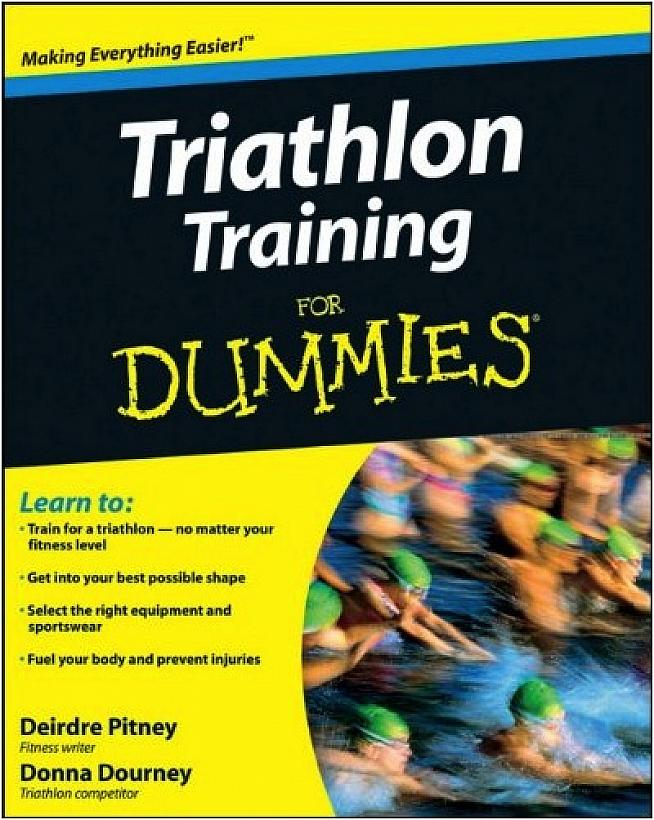
It's not an event to take lightly, and as such training had been on my mind from the moment I signed up in September last year. However, it was only with three months to go that I got "serious" about training and developed something you might recognise as a routine. (I'll openly admit that even such a relatively short time frame was difficult to be faithful to!)
I was given the book 'Triathlon Training For Dummies' as a semi tongue-in-cheek present from my parents at Christmas, so the three month marker seemed like a good place to start thinking about the dos and don'ts of a diet and training plan, most of which I had never even considered.
A running start
Dragging myself out for a run was the first challenge. Having mastered the alarm clock, I quickly realised that this was the easy part: the mechanics of simple controlled breathing techniques, foot strike, posture and pacing were alien to me. I had no idea where to run or what drills I should be practising.
I started by walking to a local park followed by a few minutes of stretching, and a couple of laps later I would be walking home again. A typical training session involved 3 or 4km of running, working up to 8km as the one-month countdown began. I barely crossed the 10km threshold during training, and to be honest I don't think you need to if your main concern is simply to successfully finish. Of course, the greater your fitness and the stronger your body becomes the more you feel you can and should push yourself.
Combating stitch was an issue for me for a long while, and a big turn off to even think about going out running. But, like most things, it became easier to handle with practice until it eventually went away.
Joining the Lycra clan
I upped my commute to work on the bike and started reading tips on how to turn these "junk miles" into a productive part of my training. Living in London I am all too aware of the Lycra clan, whose members take this idea to the next level, zooming past anyone in their line of sight at a pace that makes you feel as though you're standing too close to a passing train at a station.
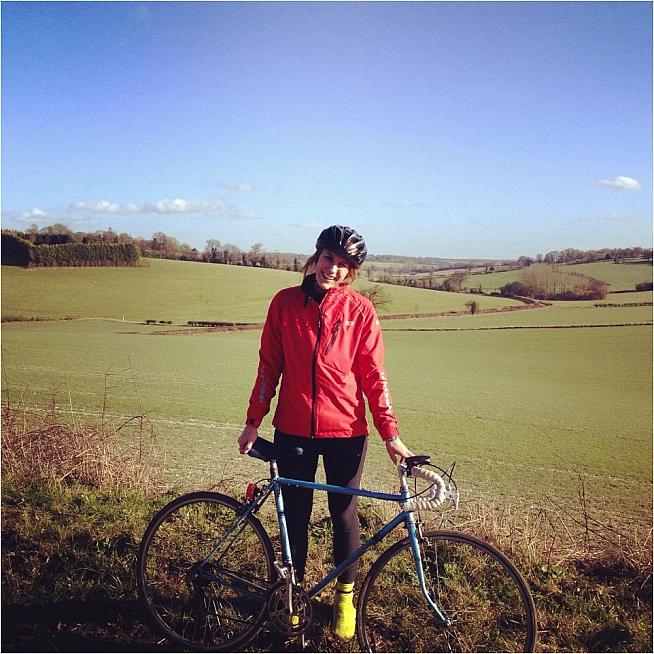
Alongside the hectic commute, longer weekend rides came as a pleasure. A good 5-6 hours on the bike of (barely) non-stop cycling was great. I was able to find my cadence, get comfortable on the bike and push myself for as long as I could. Beating the wind and choosing particularly hilly routes were a great way to develop muscle strength very quickly.
The three lap challenges at Richmond Park and Box Hill were two of my favourite (relatively) local routes, and a great way to fill in some weekend mornings as I attempted to beat the clock on my previous attempt. And you do find that it's the clock who becomes your worst enemy. I had been warned, after attending a session at Athlete Lab, that cyclists LOVE data: splits, heart rate, distance, speed, rpm...it was seeping in, and I was starting to love it too.

Into the water
The swim, I had heard and read, was the most dreaded leg of the triathlon. I was all too aware that on the day if I became tired on the bike, I could cruise; on the run, I could walk. But what if I faded during the swim? Was I meant to succumb to the natural currents of the Thames whisking me downriver? The mental challenge is where I had to up my game on this stage of the race, as well as the physical.
I took up a couple of one-on-one swimming lessons with the Swim School. The sessions were aimed at improving my technique. With helpful advice from the instructors, I made adjustments to my body position, balance, glides, fingertip drags and flutter kicks, all of which built my confidence in the water.
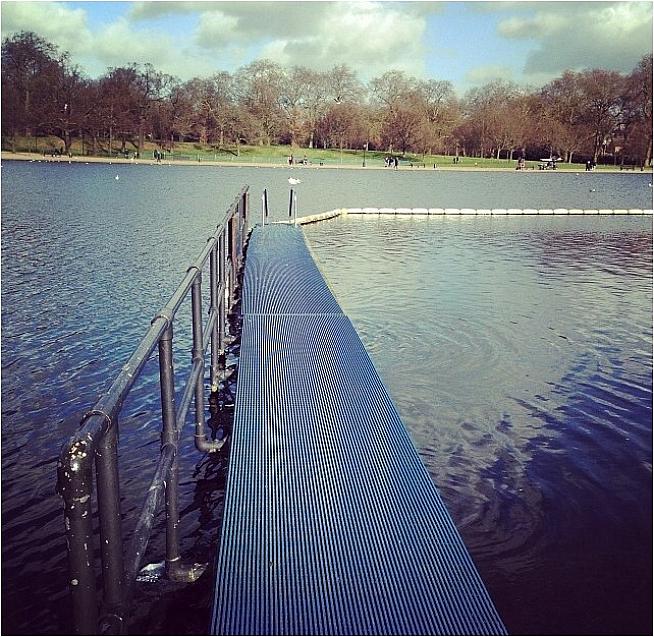
Bilateral breathing was another biggie I wanted to nail before race day. However, hurtling up and down a lane in a pool isn't quite the same experience as open water swimming. Once the wetsuit had been delivered and I was zipped in (how the hell was I supposed to rip that off in a matter of seconds?) it was straight down to Hampstead Heath and the slurpy Serpentine to get my first plunge in.
Although cold enough to freeze the proverbial, the fear of getting into such icy, dark water (it was April when I lost my wetsuit virginity) was squashed by the even bigger fear of freaking out on the day. I had to get over it, and splashing around with my face in a lake was a great way to perfect torpedo sighting and work with paddles and fins without the worry of crashing into someone in the slow lane. Torpedo sighting, by the way, is less aggressive than it sounds: it involves angling your hand guided by the middle finger to navigate your stroke.
I built up some swim sets to make sure I wasn't too focused on one particular motion. In the beginning, a typical session went something like this:
Set 1 warm-up:
1 x 200m breaststroke
1 x 100m front crawl - easy
Set 1:
1 x 100m front crawl w/ fins - 40s rest
2 x 100m front crawl w/o fins - 40s rest
2 x 100m breaststroke fast
Total: 800m
Over the course of 6 weeks, I built up to more rigorous sessions. By week 4 a typical session of alternating sets in the water looked like this:
Set 2 warm-up:
1 x 50m breaststroke (drills: 1 x stroke / 2 x kicks - 2 x strokes / 1 x kick) - 15s rest
1 x 100m breaststroke - 20s rest
1 x 100m front crawl - easy
Set 2:
2 x 50m breaststroke
1 x 100m front crawl - 20s rest
3 x 200m front crawl - 30s rest
2 x 100m front crawl - 30s rest
Total: 1,150m
The hungry games
Of course, in and among all this training my appetite had hit the roof. I was no longer popping out for a sandwich or halving a pot of soup for lunch. Oh no. My sandwiches had turned into whole loaves, accompanied by a bag (note: not packet) of prunes, dates or nuts.
Rather than going on a strict diet, I was ramping up the carb and protein intake with a focus on eating well in general. I must say it was a great way to learn and discover new foods: what gives you the most of this and that, when to eat, etc.
After a day at work, I found a simple way to curb hunger before a swim or run was to whip up a huge salad; spinach, peppers, onion and garlic, sundried tomatoes, walnuts, goats cheese, beetroot and a drizzle of home made dressing hit the spot.
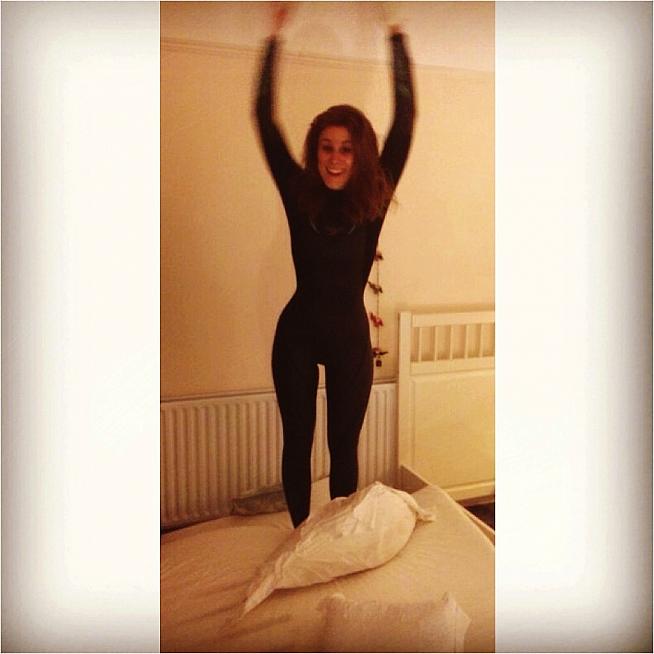
A heavier meal of smoked fish with sweet potato or steak and tomato sent me to bed nicely after a workout. The key for me was to get everything fresh and make as much of it as possible myself; that way I could stay excited about what I was going to make, and felt like I deserved it all the more when I did.
The only "synthetic" among all the grub I consumed en mass was SiS energy gels (I rate the blackcurrant flavour, personally.) They're pumped full of sugar and give you a non-sickly boost; a test that many of the other gels I tried failed on, but everyone has their own favourites.
Tapering towards glory
On the eve of the race, having culled training for the week and happily ploughed through mountains of food, I took myself to the pub (lime sodas only of course!) to see some friendly faces and enjoy a final nudge of support before getting an early night. My alarm was set for a 3:30am wake-up call - there wasn't a chance I was going to miss it.
After months of build-up, suddenly my JustGiving page found a heartbeat; my fund-raising target was well and truly smashed, and just like that, it was race day.
Was I ready? Well, I made it to the finish line, and can honestly say it was one of the best days of my racing life so far.
The weather was pretty English and fairly drizzly, perfect conditions to slip into a snug wetsuit (not so perfect for the hundreds of spectators, able to catch a total of perhaps 2 minutes of their loved ones throughout a 2-4 hour period).
As a first timer, my aim was to finish somewhere between 3-4 hours (a large window to avoid disappointment), though in my head I was after a sub 3:30 time.
In the event I finished ahead of expectations, coming in with a time of 3:11:46, which put me 23rd in my category. I was particularly happy with my swim, possibly because I thought it was going to be carnage and it was actually quite pleasant, though there is definite scope for improvement in all three areas.
One definite area for "marginal gain" is during transitions - on reflection (and on paper) it looks as though I was sitting down for a coffee break. Schoolboy error.
I most definitely will be entering another event like this, if not Windsor then I might see what the continent has to offer. No doubt some serious lakes, and some serious hills: the cycle of training begins again.
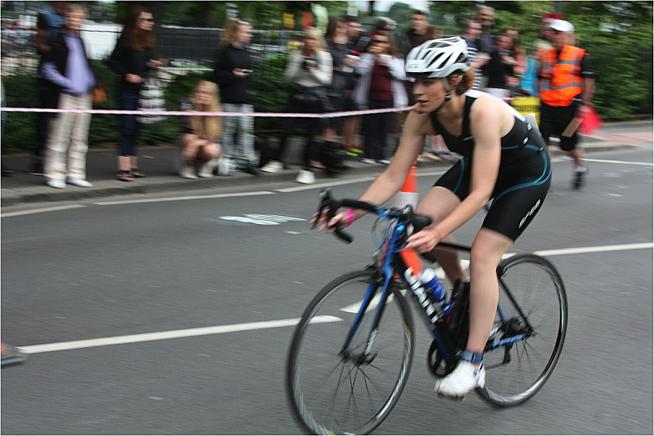
0 Comments





